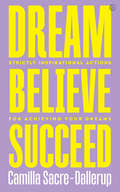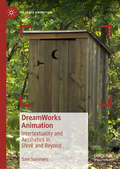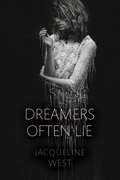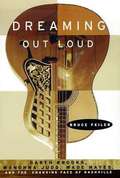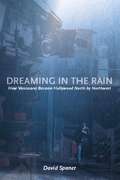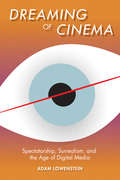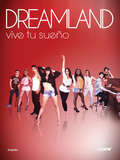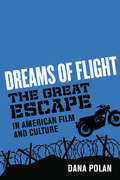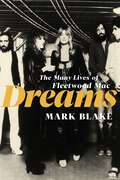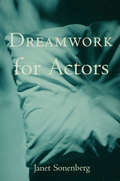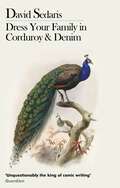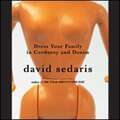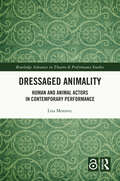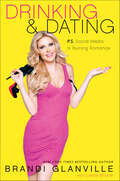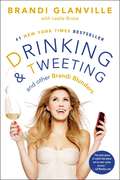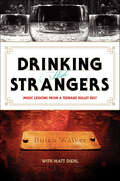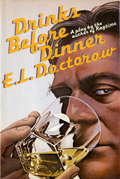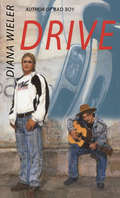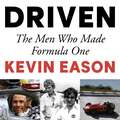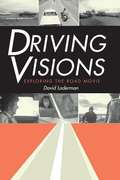- Table View
- List View
Dream, Believe, Succeed: Strictly Inspirational Actions for Achieving Your Dreams
by Camilla Sacre-Dallerup'AM-MAZ-ING! Once again, Camilla delivers a flawless performance'Craig Revel Horwood'This book gives a perfect insight into what has motivated Camilla in her life. It's fascinating, honest and inspirational'Olympian/World Champion Roger Black MBEDream. Believe. Achieve. The queen of Strictly Come Dancing, Camilla Sacre-Dallerup, won her way into the hearts of the UK as one of the original cast of professional dancers on the BBC television show, Strictly Come Dancing. In Dream, Believe, Succeed she reveals the personal philosophy and mindset that supported her through the ups and downs of overnight success and her incredible six-year tenure on the show, which culminated in winning the coveted Strictly trophy with actor Tom Chambers.In 2004, Strictly Come Dancing changed Camilla&’s life, with millions of viewers tuning in. However, that same year, Dallerup&’s relationship with her dance partner and fiancé, Brendan Cole, turned sour very publicly, while she also struggled with her newfound fame. Now, 16 years later, Dallerup has made a new name for herself as a motivational speaker and life coach. She speaks frankly and honestly about the relentless hard work, burnout and process of finding love again with her husband and Hollyoaks actor Kevin Sacre, and shares how you too can strengthen your desire and determination to make your dreams a reality.
DreamWorks Animation: Intertextuality and Aesthetics in Shrek and Beyond (Palgrave Animation)
by Sam SummersDreamWorks is one of the biggest names in modern computer-animation: a studio whose commercial success and impact on the medium rivals that of Pixar, and yet has received far less critical attention.The book will historicise DreamWorks’ contribution to feature animation, while presenting a critical history of the form in the new millennium. It will look beyond the films’ visual aesthetics to assess DreamWorks’ influence on the narrative and tonal qualities which have come to define contemporary animated features, including their use of comedy, genre, music, stars, and intertextuality. It makes original interventions in the fields of film and animation studies by discussing each of these techniques in a uniquely animated context, with case studies from Shrek, Antz, Kung Fu Panda, Madagascar, Shark Tale, Bee Movie, Trolls and many others. It also looks at the unusual online afterlife of these films, and the ways in which they have been reappropriated and remixed by subversive online communities.
Dreamers Often Lie
by Jacqueline WestLiar meets Romeo and Juliet in this Shakespeare-inspired young adult novel about whether to trust yourself when everyone is telling you your instincts are wrong--for fans of Holly Black, Laini Taylor, and Black Swan, by New York Times bestselling author Jacqueline West. Jaye wakes up in the hospital, disoriented, and beset by a slippery morphing of reality into something else. She repeatedly sees a boy who she feels like she knows--but that's impossible. Determined to get back to school and back to A Midsummer Night's Dream, in which she's starring, she lies to her sister, her mom, and her doctors--she's fine, she says. She's fine, she's fine, she's fine. But then on her first day back, she takes a seat in class . . . next to the mysterious boy. Queasy with anxiety ("I can't see you," she hisses at him, "because you're not really here"), Jaye realizes this boy is, in fact, real. And he has no idea what she's talking about. Caught between this fascinating, empathetic new kid and her childhood friend turned recent love interest, Jaye begins to notice unnerving similarities between her circumstances and those of some of Shakespeare's most famous plays. Tingling banter and clandestine meet-ups give way to darker, muddier incidents. As things escalate to a frightening pitch, how much of what's happening is real, how much is in Jaye's head, and how much does it matter as she's hurtling toward a fateful end over which she seems to have no control?
Dreaming Down the Track: Awakenings in Aboriginal Cinema
by William LempertWhat can Aboriginal filmmaking reveal about Indigenous presence and futures? The product of years of embedded fieldwork within Indigenous film crews in Northwestern Australia, Dreaming Down the Track delves deeply into Aboriginal cinema as a transformative community process. It follows the social lives of projects throughout their production cycles, from planning and editing to screening, broadcasting, and after-images. Across its narrative sweep, this ethnography engages the film career of Kukatja elder Mark Moora to demonstrate the impact of filmmaking on how Aboriginal futures are collectively imagined and called forth. William Lempert highlights a series of awakenings through which Moora ultimately came to view cinema as a process for catalyzing his family&’s return to their home country of Mangkayi. This biographical media journey paints an intimate portrait of the inspiring possibilities and sobering limitations of Indigenous envisioning within settler states. Lempert traces how Moora&’s life and films convey a multiplicity of Aboriginal experiences across time and space, from colonial contact to contemporary life in communities like Balgo, including the continued governmental attempts to undermine them. Amid ongoing negotiations to establish the first treaties between Indigenous nations and Australian states, Dreaming Down the Track illustrates what is at stake in how Aboriginal–State relations are represented and understood, both within communities and for the broader public. Lempert stays true to Moora&’s insight that film can preserve community stories for generations to come, toward the aim of enacting sovereign futures.
Dreaming Out Loud: Garth Brooks, Wynonna Judd, Wade Hayes, and the Changing Face of Nashville
by Bruce FeilerCountry music has exploded across the U.S. and undergone a sweeping revolution, transforming the once ridiculed world of Nashville into an unlikely focal point of American pop culture. Bruce Feiler was granted unprecedented access to the private moments of the revolution. Here is the acclaimed report: a chronicle of the genre's biggest stars as they change the face of American music.
Dreaming in the Rain
by David SpanerVancouver is now North America's third largest center for film and television production, recently witnessing the filming of Halle Berry's Catwoman and Will Smith's I, Robot, among others. But Vancouver has been hosting filmmakers for years, coming into its own in the early 1970s when Robert Altman, Warren Beatty and Julie Christie made McCabe and Mrs. Miller and Mike Nichols, Jack Nicholson and Candice Bergen filmed Carnal Knowlege.Dreaming in the Rain tells the story of how Vancouver became North by Northwest, from its early days as a Hollywood studio backlot to its becoming home to a vibrant indigenous scene that is among the most acclaimed, provocative, independent filmmaking communities anywhere.But with Hollywood's growing concern over "runaway" productions, Vancouver's growing filmmaking scene is wrought with controversy. The city's American-based film industry is powerful enough to inspire loathing and threats from Hollywood.Along with tracing the art and commerce of Vancouver filmmaking, Vancouver Province movie critic David Spaner brings to life the flamboyant film personalities who left their marks. From visitors like Errol Flynn and Robert Altman, to local heroes such as The Matrix's Carrie Anne Moss, who grew up in Vancouver, and Kissed star Molly Parker and director Lynne Stopkewich, vital players in the groundbreaking Vancouver indie scene.Includes more than 40 black and white photographs.". . . [Spaner] has . . . scrupulous attention to detail and an obvious curiosity and passion for both Vancouver and its film industry."--Entertainment TodayDavid Spaner is a movie critic for the Vancouver Province.
Dreaming of Cinema
by Adam LowensteinAdam Lowenstein argues that Surrealism's encounter with film can help redefine the meaning of cinematic spectatorship in an era of popular digital entertainment.
Dreaming of Cinema: Spectatorship, Surrealism, and the Age of Digital Media
by Adam LowensteinAdam Lowenstein argues that Surrealism's encounter with film can help redefine the meaning of cinematic spectatorship in an era of popular digital entertainment.
Dreaming of Cinema: Spectatorship, Surrealism, and the Age of Digital Media (Film and Culture Series)
by Adam LowensteinVideo games, YouTube channels, Blu-ray discs, and other forms of "new" media have made theatrical cinema seem "old." A sense of "cinema lost" has accompanied the ascent of digital media, and many worry film's capacity to record the real is fundamentally changing. Yet the Surrealist movement never treated cinema as a realist medium and understood our perceptions of the real itself to be a mirage. Returning to their interpretation of film's aesthetics and function, this book reads the writing, films, and art of Luis Buñuel, Salvador Dalí, Man Ray, André Breton, André Bazin, Roland Barthes, Georges Bataille, Roger Caillois, and Joseph Cornell and recognizes their significance for the films of David Cronenberg, Nakata Hideo, and Atom Egoyan; the American remake of the Japanese Ring (1998); and a YouTube channel devoted to Rock Hudson. Offering a positive alternative to cinema's perceived crisis of realism, this innovative study enriches the meaning of cinematic spectatorship in the twenty-first century.
Dreamland: Vive tu sueño
by Varios AutoresDreamland, la escuela a la que jóvenes cantantes y bailarines acuden para cumplir sus sueños. ¡Bienvenidos a Dreamland! Dreamland narra las vivencias de un grupo de jóvenes cantantes, bailarines y actores que se preparan para triunfar en el mundo del espectáculo en una escuela muy especial: el centro de estudios artísticos más importante y prestigioso del país. En este libro, el creador de la serie y los protagonistas nos lo cuentan todo: desde cómo comenzó esta maravillosa experiencia hasta sus sueños y emociones más íntimos pasando por las anécdotas propias de la convivencia entre todos. Un sensacional recorrido por todo lo que los dreamers han vivido hasta conseguir lo que siempre han deseado: vivir de la música. Así que déjate llevar por la poderosa fuerza de vivir tu vida. ¡Vive tu sueño, vive la vida!
Dreams of Flight: "The Great Escape" in American Film and Culture
by Dana PolanThe first full-length study of the iconic 1960s film The Great Escape and its place in Hollywood and American history.Escaped POW Virgil Hilts (Steve McQueen) on a stolen motorcycle jumps an imposing barbed wire fence—caught on film, the act and its aftermath have become an unforgettable symbol of triumph as well as defeat for 1960s America. Combining production and reception history with close reading, Dreams of Flight offers the first full-length study of The Great Escape, the classic film based on a true story of Allied prisoners who hatched an audacious plan to divert and thwart the Wehrmacht and escape into the nearby countryside. Through breezy prose and pithy analysis, Dana Polan centers The Great Escape within American cultural and intellectual history, drawing a vivid picture of the country in the 1960s. We see a nation grappling with its own military history, a society undergoing significant shifts in its culture and identity, and a film industry in transition from Old Hollywood's big-budget runaway studio films to the slow interior cinema of New Hollywood. Dreams of Flight combines this context with fan anecdotes and a close study of filmic style to bring readers into the film and trace its wide-reaching influence. Polan examines the production history, including prior adaptations in radio and television of celebrated author Paul Brickhill's original nonfiction book about the escape, and he compares the cinematic fiction to the real events of the escape in 1944. Dreams of Flight also traces the afterlife of The Great Escape in the many subsequent movies, TV commercials, and cartoons that reference it, whether reverentially or with humor.
Dreams of Modernity
by Laura MarcusLaura Marcus is one of the leading literary critics of modernist literature and culture. Dreams of Modernity: Psychoanalysis, Literature, Cinema covers the period from around 1880 to 1930, when modernity as a form of social and cultural life fed into the beginnings of modernism as a cultural form. Railways, cinema, psychoanalysis and the literature of detection - and their impact on modern sensibility - are four of the chief subjects explored. Marcus also stresses the creativity of modernist women writers, including H. D. , Dorothy Richardson and Virginia Woolf. The overriding themes of this work bear on the understanding of the early twentieth century as a transitional age, thus raising the question of how 'the moderns' understood the conditions of their own modernity.
Dreams: The Many Lives of Fleetwood Mac
by Mark BlakeAn illuminating deep-dive into everything Fleetwood Mac—the songs, the rivalries, the successes, and the failures—Dreams evokes the band's entire musical catalog as well as the complex human drama at the heart of the Fleetwood Mac story.Fleetwood Mac has had a ground-breaking career spanning over fifty years and includes some of the best-selling albums and greatest hits of the twentieth and twenty-first centuries. But the band&’s unique story is one of enormous triumph and also deep tragedy. There has never been a band in the history of music riven with as much romantic drama, sexual tension, and incredible highs and lows as Fleetwood Mac. Dreams is a must-read for casual Fleetwood Mac fans and die-hard devotees alike. Presenting mini-biographies, observations, and essays, Mark Blake explores all eras of the Fleetwood Mac story to explore what it is that has made them one of the most successful bands in history. Blake draws on his own exclusive interviews with Mick Fleetwood, Stevie Nicks, Lindsey Buckingham, and the late Peter Green and Christine McVie, and addresses the complex human drama at the heart of the Fleetwood Mac story, including the complicated relationships between the band's main members, but he also dives deep into the towering discography that the band has built over the past half-century.
Dreamwork for Actors
by Janet SonenbergDrawing upon her wide experience as actor and director, Janet Sonenberg shows what dreamwork can do. No other acting technique offers the performer's own dreams as a means to profoundly deepen imaginative and artistic expression. This is a wholly new tool with which actors can unleash startling performances.
Drehbuchforschung: Perspektiven auf Texte und Prozesse
by Claus Tieber Florian Krauß Alexandra Ksenofontova Jan HenschenDie Drehbuchforschung ist ein junges, sich rasch entwickelndes internationales Forschungsfeld. Der Sammelband führt Forschungen aus dem deutschsprachigen Raum zusammen, die sich mit dem Drehbuch als schriftliches Artefakt und als Teil des Produktionsprozesses auseinandersetzen. Neben grundlegenden theoretischen Konzepten der Drehbuchforschung stehen historische und archivbasierte Analysen sowie gegenwartsbezogene Problemstellungen im Vordergrund. Praxisnah finden außerdem Akteure und Abläufe der Drehbuchentwicklung sowie Fragen der Dramaturgie Beachtung. Der Sammelband verschafft somit einen Überblick über die Bandbreite interdisziplinärer Ansätze des Forschungsfeldes und veranschaulicht das Erkenntnispotential der aktuellen Drehbuchforschung.
Dress Your Family In Corduroy And Denim
by David Sedaris'No one has a turn of phrase like David Sedaris. This series of essays about his life and family is a joy from start to finish' Adam KayDavid Sedaris plays in the snow with his sisters.He goes on vacation with his family.He gets a job selling drinks.He attends his brother's wedding.He mops his sister's floor.He gives directions to a lost traveller.He eats a hamburger.He has his blood sugar tested.It all sounds so normal, doesn't it?In his new book David Sedaris lifts the corner of ordinary life, revealing the absurdity teeming below its surface. His world is alive with obscure desires and hidden motives - a world where forgiveness is automatic and an argument can be the highest form of love. Dress Your Family in Corduroy and Denim finds one of the wittiest and most original writers at work today at the peak of his form.
Dress Your Family In Corduroy And Denim
by David SedarisNo one renders the pathos, chaos, and impossible variety of daily encounters like David Sedaris. On every subject, he is bruisingly painful and tenderly affectionate. Sedaris is unique in American writing, and these readings of his own work are highly skilled performances. This new collection will be eagerly anticipated by his ever-growing crowd of devoted fans.
Dressaged Animality: Human and Animal Actors in Contemporary Performance (Routledge Advances in Theatre & Performance Studies)
by Lisa MoravecThe book applies a productive interdisciplinary lens of art history, performance, and animal studies for approaching political economy issues, critiquing anthropomorphic worldviews, and provoking thoughts around animal and human nature that spark impulses for an innovative performance aesthetics and ethics.It combines Marxist analysis with feminist and posthumanist methodology to analyse the relation between ‘societal dressage’ and ‘bodily animality’ that humans and animals share. Within this original theoretical framework, the book develops the concept of ‘dressaged animality’ as a mode of critique to analyse the social and political function of interdisciplinary forms of ‘contemporary performances.’Drawing on archival and primary research, the book theorises and historicises more than 15 performance practices in which animality is allegorically staged through by humans danced, real, or filmically mediated animals. It focuses on Rose English’s pioneering approach to performance-making as well as on overlooked performances by other renown and largely unknown American (Mike Kelley/Kate Foley, Robert Morris, Bruce Nauman, Yvonne Rainer, Diana Thater), British (Mark Wallinger, Rose English), and European artists (Tamara Grcic, Judith Hopf, Joseph Beuys, Bartabas) from the late 1960s until the late 2010s. While various types of artistic practice are framed as forms of critique (for example, protest art, interventionist strategies, institutional critique), the book maps an original performance theory in art which shows that contemporary artistic performances can also take up a critique of societal dressage.This study will be of great interest to students and scholars in art history, theatre, dance and performance studies, and ecology, as well as to artists and curators working with performance.
Drinking and Dating: P.S. Social Media Is Ruining Romance
by Brandi GlanvilleOn the heels of her New York Times bestselling book Drinking and Tweeting, Real Housewives of Beverly Hills star Brandi Glanville takes readers on a wild ride through her dating life in this highly-entertaining relationship book.Drinking and Dating chronicles Glanville’s misadventures stumbling through today’s dating world. From social media blunders to bedroom escapades, Brandi withholds nothing. Each chapter is inspired by a relationship encounter she has had since her sensational divorce from actor Eddie Cibrian. Hilarious, surprising, vulnerable, and outspoken, Glanville’s unexpected take on dating after heartbreak – and life in general - is as unique as she is. Just like Brandi herself, Drinking and Dating is sexy, funny, and eyebrow-raising.
Drinking and Tweeting: And Other Brandi Blunders
by Leslie Bruce Brandi GlanvilleShe&’s the brutally honest breath of fresh air on The Real Housewives of Beverly Hills, known for her dramatic divorce, her barely-there clothing, and her inability to keep her mouth shut. So why should she change now? Brandi Glanville tells all in this hilarious, no-holds-barred memoir.Fans have been waiting for Brandi&’s scoop on one of the biggest divorces of the decade, since her husband of eight years abandoned her and their two sons to marry country singer LeAnn Rimes. Not only does Brandi spill the beans about her side of the split, the lovable housewife shares the incredible wild ride that took her from a life in the ghetto to Hollywood&’s most elite circles. For the first time, Brandi talks about how she escaped a rough neighborhood on the outskirts of Sacramento and stumbled into a successful modeling career that swept her into a world of Paris Fashion Weeks, private jets, and uncircumcised penises. Before she knew it, Brandi was the perfect Hollywood trophy wife—at least until her marriage exploded. Today, the refreshingly filter-free housewife and unapologetic mom is the newest full-time cast member of Bravo&’s juggernaut franchise, where she often elicits raised eyebrows and gossip from her costars for her refusal to be the scorned ex-wife, to be bullied, to change her sarcastic sense of humor, or—on most occasions—to wear a bra. Sassy, raunchy, and compulsively readable, Drinking and Tweeting perfectly captures Brandi&’s open-book attitude, as she dishes about everything from her DUI, her cheating ex, her one-night stands, and the secret plastic surgery that made her &“seventeen&” again. You&’re sure to enjoy every page of this funny, upbeat, honest tale. Clear your schedule for an afternoon and grab your favorite cocktail, a comfy seat . . . and maybe a Xanax. But that&’s for later.
Drinking with Strangers: Music Lessons from a Teenage Bullet Belt
by Matt Diehl Butch WalkerRolling Stone magazine called Butch Walker one of “America’s best singer-songwriters” and voted him a “Producer of the Year.” An American music industry giant, Walker has worked with some of today’s hottest talent, including Weezer, Katy Perry, Dashboard Confessional, Pink, Tommy Lee, Fall Out Boy, and The Donnas to name but a few. In his riveting memoir, Drinking with Strangers, Walker tells the fascinating story of his life and remarkable career, taking readers on a breakneck ride from his Georgia roots to the Hollywood music scene, and giving us a close up insider’s view of life behind closed recording studio doors.
Drinks before Dinner: A Play
by E. L. DoctorowThe long-unavailable work by one of America's most eminent writers.
Drive
by Diana WielerIn a shiny new pickup packed with camping equipment and guitars, and with a $5,000 debt hanging over their heads, Jens and his musician brother, Daniel, take off on an unusual kind of road trip. Little do they know that they are embarking on the longest weekend of their lives -- a weekend in which far more than money is at stake. A gritty and unforgettable portrait of two young men who are at once ordinary and intensely complicated.
Driven: The Men Who Made Formula One
by Kevin EasonDelve into the murky world of Formula 1 - a world where money, fame and power rules - but for how long?Formula One is speed, glamour, danger - and eye-watering wealth. Driven: The Men Who Made Formula One tells how a small group of extraordinary men transformed Formula One from a niche sport played out on primitive tracks surrounded by hay bales and grass verges into a £1 billion circus performing in vast theatres of entertainment all over the world.Led by Bernie Ecclestone, the billionaire ringmaster, this clique started by scraping a living to go racing and ended up creating space-age cars, turning drivers from amateur gladiators into multimillion-pound superstars, like Ayrton Senna and Lewis Hamilton, while the names of Ferrari, McLaren and Williams are now as familiar around the world as Manchester United or Real Madrid. For 20 years, Kevin Eason watched how these men operated like a sporting Mafia, protecting each other while squabbling over the vast wealth pouring into the sport. As motor racing correspondent for The Times and then with The Sunday Times, Eason was privileged to have a ringside seat as this cabal of wealthy characters ruled and then were pushed out of the sport they created. This colourful and compelling account of the extraordinary flourishing of Formula One explores the quirks and extravagances of the men who converged - in one generation - to shape their sport; disparate characters with a common impulse: they were racers - and they were driven.(P)2018 Hodder & Stoughton Limited
Driving Visions
by David Laderman"This is a superbly conceived, thoughtfully organized, and well-written study of a subject--the 'road movie'--that has lacked anything close to a coherent, book-length overview. . . . It will make an ideal course text and should also have a wide appeal to non-academic readers. "-- Scott Simmon, author of The Films of D. W. Griffith and King Vidor, AmericanFrom the visionary rebellion of Easy Rider to the reinvention of home in The Straight Story, the road movie has emerged as a significant film genre since the late 1960s, able to cut across a wide variety of film styles and contexts. Yet, within the variety, a certain generic core remains constant: the journey as cultural critique, as exploration beyond society and within oneself. This book traces the generic evolution of the road movie with respect to its diverse presentations, emphasizing it as an "independent genre" that attempts to incorporate marginality and subversion on many levels. David Laderman begins by identifying the road movie's defining features and by establishing the literary, classical Hollywood, and 1950s highway culture antecedents that formatively influenced it. He then traces the historical and aesthetic evolution of the road movie decade by decade through detailed and lively discussions of key films. Laderman concludes with a look at the European road movie, from the late 1950s auteurs through Godard and Wenders, and at compelling feminist road movies of the 1980s and 1990s.
